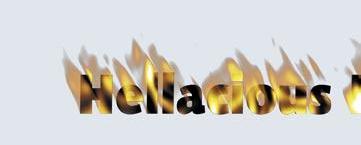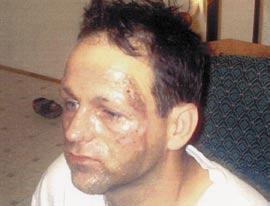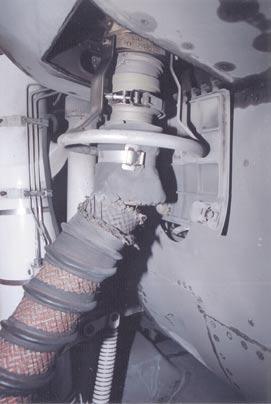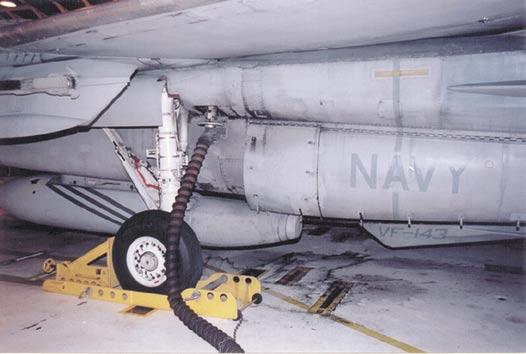
4 minute read
Hellacious Huffer Hose in the Hush House
By AT1(AW) Steven Tidwell
Iam not a random Sailor; I am your co-worker, the guy you see walking across the hangar bay, and this story is about a time when I was working as a QAR in the quality-assurance division at VF-143. This incident occurred in the hush house at NAS Oceana during a high-power turn.
Advertisement
We were conducting a leak check on an engine due to high oil consumption and had completed the normal safety brief and procedures review. At the hush house, the procedure is to leave the huffer hose connected to the aircraft in case of a tail-pipe fire. After we brought the engine on-line, we removed the aft fixed cowl and placed it outside the hush house because of the risk of it becoming a missile hazard. We then started the highpower turn.
The mech with me told the plane captain to throttle up the engines, and we clipped into the chain designed to keep us from being blown down the exhaust tunnel. We opened the daily door and started searching for the oil leak. The mech saw that I was looking at the forward part of the engine, so he turned to go aft. At this point, the huffer hose (which, unbeknownst to us, still was charged) separated approximately 12 inches below the nozzle used to connect the hose to the jet. I saw flames and was knocked backward into the mech. I rolled out from under the jet, and the mech followed.
At this point, I was on fire. In an effort to extinguish the flames, the mech rolled me over three times. I then pulled off my goggles and propped myself up on my left elbow to assess the damage. My right hand was peeling at the knuckles and was black and gray. My jacket had a spot of rubber about the size of a dime melted to the sleeve, and my embroidered nylon crow was beaded up.
My chief was in the observation booth with the hush-house operators. The turn person shut down the engine shortly after he saw the explosion. My chief ran out and saw that both the mech and I were burned and called 911. The base fire-department personnel arrived, and the only thing I heard was, “Get Nightingale [helicopter ambulance] here now!” My chief was saying, “They are just covered with soot. It isn’t as bad as it looks.”


I was transported to Virginia Beach General Hospital, where they cleaned me up a little and dressed my burns. We were directed to Portsmouth Naval Hospital to see a plastic surgeon. They said the only thing I could do was to sit in the bathtub with a bar of soap and a washrag and scrub my face. This process hurt like hell, and I don’t recommend standing if this has to be done to you because it will make your knees buckle.
The squadron found out that the airstart check valve had failed open, which allowed 1,100-degree-Fahrenheit engine bleed-air to charge the huffer hose in reverse.
Eventually, the huffer hose, which was only designed to handle starter air at ambient temperatures, failed at a point roughly 36 inches from my head. I was able to examine my cranial two days after the incident, and the seal on the goggles was gone on the left side where it had melted to my face. It took three days to get the seal scrubbed out of my face, but, if I had not been wearing my goggles, I probably would have lost my left eye (and maybe the right one, too).
I hope this information gets your attention if you sometimes don’t wear your PPE, because you never know when or where PPE will be the only thing between you and a lifetime of regret.
It is human nature to assume “it won’t happen to me,” but the fact is that “it” can and does happen to




somebody somewhere every day! Is it really worth the risk not to wear your PPE because it’s “dirty,” “uncomfortable,” or “too scratched up?”
I represent Joe Sailor, you, and the maintainer next to you who are doing a hard job well every day. Because we’re professionals, we follow the rules everyday. On this unfortunate day, though, when “it” couldn’t possibly happen, it did. I’m thankful my cranial and goggles were in place to protect my eyesight, my ears, and possibly my hearing, as well. In addition, my jacket prevented serious burns to my upper body.
AT1 (AW) Steven Tidwell has made a full recovery and now serves as VF-143’s IWT branch leading petty officer.










